5 Winning Fantasy Football Tips
Your fantasy draft is almost here and we have five tips for building a championship contender.

As the summer comes to a close, many Americans are looking ahead to a date that has likely been circled on their calendar for months…their fantasy football draft. Whatever your level of commitment to your fantasy league, we’ve put together some basic guidance to ensure you have the best chance to succeed come draft night and the upcoming season.

1) Know the rules and scoring for your league
You wouldn’t expect to win a game of monopoly if you didn’t know the rules, and the same applies to fantasy. But with the diverse array of options for fantasy leagues, it’s vital that you understand how your league is set up as it will have a huge impact on the value of potential draft picks. For instance, is your league a PPR league? Do you have a flex spot? How many WRs and QBs start each week?
Understanding these settings is vital. In a PPR league, a pass-catching RB like Matt Forte jumps ahead of numerous RB alternatives due to the enormous number of passes he hauls in each season. In a one-QB league, you can afford to wait on a signal caller, but if you must start two QBs, it makes it that much more important to grab two legitimate starters. Simply put, you can’t figure out how to best win the game until you know precisely the rules of the game.
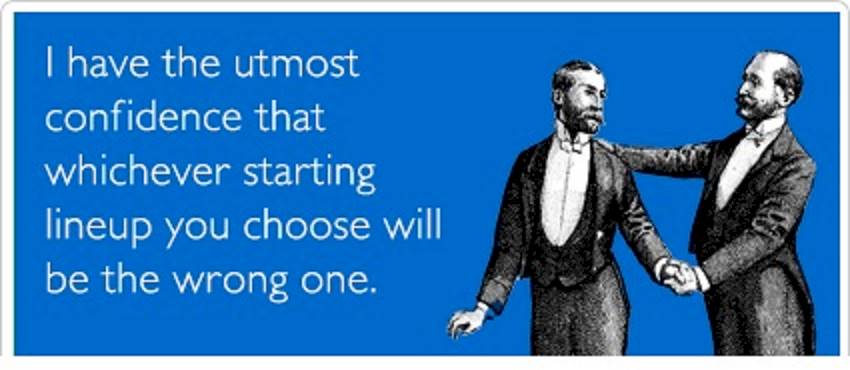
2) Don’t gamble in the early rounds
It’s an old adage in fantasy football that you rarely win your league with your first three picks, but you can easily lose your league in these early rounds. Top-30 players (or top-36 players) are the cornerstones of your team, and while it’d be great to nab a first round value in the third round, optimistically reaching for a player with a high ceiling and a low floor is a risk that just isn’t worth it. Early in your draft try and get players who have proven to be reliable year after year, and preferably without extensive injury histories.
Jake Ciely of Rotoexperts summarizes “…one thing many don’t talk about is where you can lose your draft. No one is ever going to have the perfect draft, but you can make several draft mistakes that will have you playing catch-up to all season.”
Different fantasy owners have different strategies in the early rounds. Some like to go RB-RB to ensure starting quality players at a shallow position. Others prefer the upside of the top WRs who can put up enormous statistics in a given week. But whatever your preference, try your best to limit risk in the first three or four rounds. In addition to injury-prone players, also be wary of those who might have to split carries or target or are in systems that don’t utilize their skills to the fullest.
Players like Doug Baldwin and Jeremy Hill have put up huge numbers in recent seasons, but carry a risk due to offensive schemes that could minimize their opportunities, and teammates who could cut into their touches (Tyler Lockett and Gio Bernard respectively). We’re not saying avoid these players, but be wary about using a pick in the early rounds on such players.
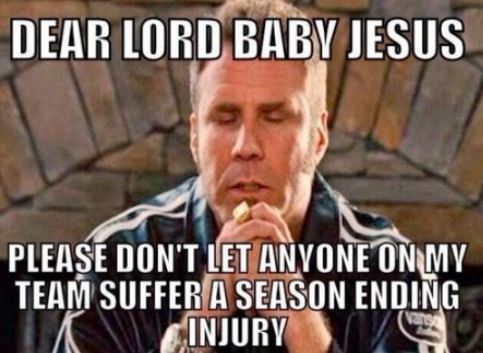
3) Fantasy Football isn’t about upside, it’s about consistency
Almost all fantasy leagues feature week-to-week match-ups. It really doesn’t matter how many points a player can put up in a complete season, but rather how many points you can count on them to provide each and every week. A game with 10 catches for 100+ yards and multiple TDs from a WR can certainly win you a week, but if you had the option you should always want to spread these stats as evenly as possible over all the weekly matchups.
ESPN’s Matthew Berry puts it this way, “At a fundamental level, fantasy football is all about minimizing risk and giving yourself the best odds to win on a weekly basis. That’s it. That simple. Everything leads back to that. Everything.”
This is why big play threats are always a dangerous option for fantasy owners as they tend to be flood-or-drought players that can win you a matchup one week and then lose you the next three. Grinding RBs and possession WRs might not make Sportscenter like their big-play colleagues, but with them in your lineup you can feel secure that you will get a decent return each week, and a far more consistent (and likely victorious) fantasy team. Compare them to a player like Tavon Austin, a dynamic playmaker who put up decent numbers last season, but only had four games that would actually help your fantasy team. The rest of the year he proved to be an anchor on many fantasy teams’ fortunes.
If you’re having trouble deciding between two players with similar projected stats, look at their game logs from recent seasons. If one of them has a few huge games and a few games in which the go invisible, and the other player seems to put up the same respectable, if not jaw-dropping, stats each week, go with the reliable player. It’ll be beneficial for your team in the long-run, and if your league features playoffs (as most leagues do), you can’t afford to have someone no-show when your season could end with a single bad week.
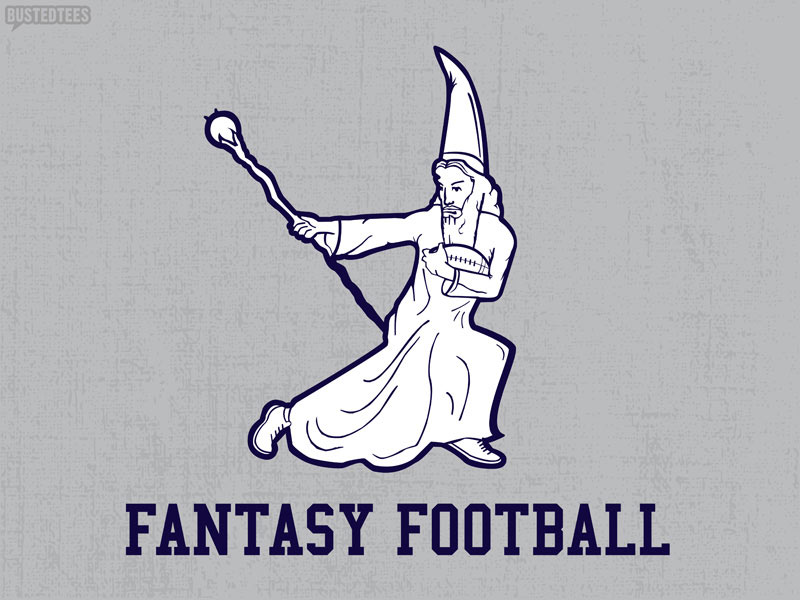
4) Don’t forget that fantasy football is a game and is supposed to be fun
Assume you are deciding between two similar players. As mentioned above, you’ve checked their consistency and both offer similar reliability. So who do you choose? Simple. The player you’d prefer to root for, on a team you don’t want to root against. As serious as you may take your fantasy league, it is still supposed to be fun. Many fantasy owners get to watch, enjoy and have a rooting interest in games that otherwise would have little significance to the neutral fan. That’s the main joy of playing the game in the first place.
For instance, say you’re deciding between taking Tom Brady or Drew Brees. Perhaps you’re one of the many football fans who despise the Patriots and their supermodel-marrying, superstar QB. If the numbers are similar, remember this is supposedly a game played for fun, and go with the player you won’t be conflicted about rooting for week-to-week. Now, it would be foolish to pass on a better fantasy prospect just because they play for a team you dislike or you think they’re a dirty player (or you’re jealous they are dating Gisele), but if all other things are equal, go with a player that you can fully get behind each week, rather than feeling dirty for hoping success for a rival team’s player or someone you dislike for whatever reason. Remember, fantasy football is a game, and games are supposed to be fun.
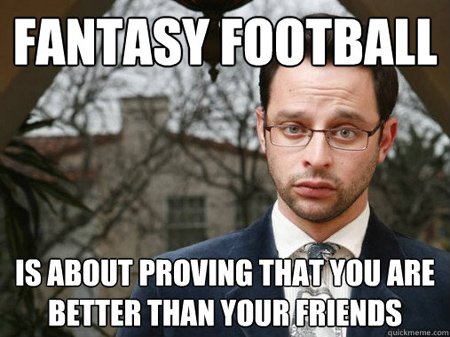
5) Despite recent trends and expert’s theories, do not wait too long for your RBs.
Recent years have seen the rise of the WR, both in real football and fantasy football. Monsters like Antonio Brown, Odell Beckham Jr. and Julio Jones have been fantasy gods and look like certainties to continue their dominance. This year, even the second and third tiers of WRs have potential studs with names such as Landry, Tate and Cobb.
The zero-RB strategy seems popular amongst fantasy experts nowadays, but it implies that you can find, and pick-up, weekly RB plays or draft a stable of middling RBs and hope that two are viable each week. Although it is an interesting theory, explained by 4for4‘s Joe Hulka, we’re not buying in yet.
This is where an understanding of both your league settings and the depth of specific positions comes into play. There are an extremely limited number of starting quality RBs, and even fewer that don’t carry the risk of losing carries to a handcuff or 3-down RB. You might find yourself choosing between a better WR and a less RB, but even if the WR is projected to outscore the RB, you must consider the potential replacement for each spot. Finding a WR who can be selected later in the draft is far easier than finding a replacement level RB later in the draft. Yes, early-pick RBs have a bigger chance of busting than an early-pick WR, but there’s also the chance that you struggle to find two starting-quality RBs each week than two or three starting-calibre WRs.
So while fantasy, like the NFL itself, has seen a shift towards more valuable WRs and increased receiving numbers, the last place you want to find yourself at the end of the draft is weak or inadequate at the RB slots. Be sure not to miss a run on starting-level RBs as the drop-off from a Carlos Hyde/Matt Forte to a Duke Johnson/Rashad Jennings is likely to be precipitous. It’s also harder to find a midseason replacement (either via trade or the waiver wire) for an injured RB than for an injured WR so be sure to grab some RB depth for your bench as well. It isn’t sexy, but you’ll be glad you protected yourself come November or December when those who went WR-WR-WR in the first three rounds are praying that Khiry Robinson or James White get enough carries in Week 12.
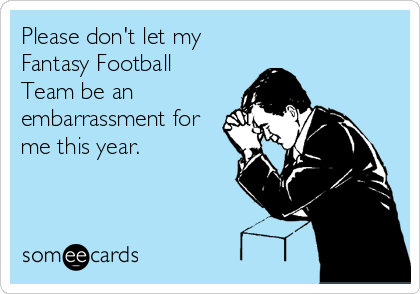
So good luck this season to all of you. Do your research before your draft and try a few mock drafts beforehand so that you aren’t taken aback by an unexpected player falling to you or a lack of preferred options when it’s time for you to pick. Mock drafts also give you a better sense of where players are actually going, instead of the “professional” rankings that don’t account for popular sentiment or trends amongst fantasy owners. But most importantly, enjoy yourself.
